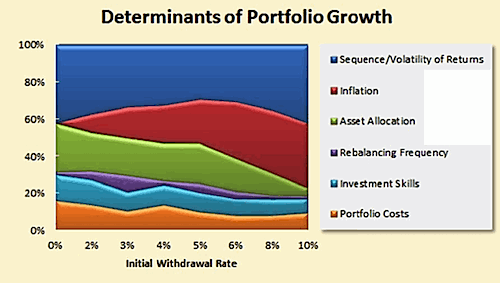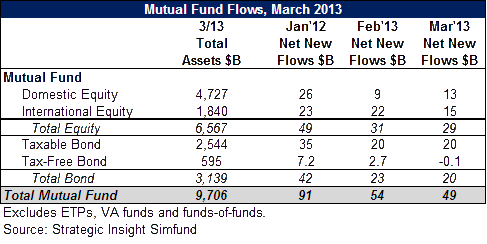In 2011, about 3.4 million Americans moved some $307 billion from old 401(k) accounts into new accounts somewhere else. About half of the money rolled over to IRAs at big DIY institutions like Vanguard and TD Ameritrade. The other half went to advisor-directed IRAs at wirehouses like JPMorgan Chase or regional broker/dealers like LPL Financial. Less than one percent, or only about $2 billion, rolled into new 401(k) accounts.
Spencer Williams (above), the CEO at Charlotte, N.C.-based Retirement Clearinghouse LLC, wants to alter that financial traffic pattern. For the past year or so, his firm has begun showing new employees at one large corporate client how to consolidate old 401(k) accounts and old rollover IRAs into their new 401(k) plans.
Williams is now the apostle for “roll-ins.” He’s undergone a conversion of sorts. Formerly a rollover specialist—he ran the rollover IRA program with Jerry Golden at MassMutual—he now sees a big opportunity in helping young and mid-career people gather up all their old, small and neglected retirement accounts into their current 401(k) plan.
Ultimately, he wants to create a clearinghouse for 401(k) accounts, and he changed the name of the company from Rollover Systems to Retirement Clearinghouse this spring to reflect that vision and to mark the shift in strategy. He recently hired former MassMutual colleague Tom Johnson, recently of New York Life, to develop new business among big 401(k) recordkeepers.
There’s a quixotic element to this crusade. Williams seems to be swimming against the current, which has been sweeping loose retirement money away from old 401(k)s to rollover IRAs. But Williams has a deep-pocketed backer (the majority owner is Robert Johnson, who sold Black Entertainment Television to Viacom for $3 billion in 2001) and initial success in executing roll-ins for one large plan sponsor.
And he has a sense of mission: he thinks his clearinghouse will help stop so-called leakage from retirement accounts when people change jobs and help agglomerate the small, “stranded” accounts littering the retirement industry so that people can manage their savings smarter—and ultimately retire with more money.
“You can see the nexus of providers and participants and public policy interest here,” he said. “If we could implement this system-wide, we think we could reduce the cash-out rate [from tax-deferred accounts] by 50%,” Williams told RIJ.
The ‘ah-ha’ moment
Williams, a US Naval Academy graduate, became more interested in roll-ins than rollovers only recently. Back in 2007, Johnson headhunted him away from MassMutual to help turn around one of Johnson’s companies, Rollover Systems. Williams replaced Reggie Bowser, a former Lending Tree executive who started the firm in 2001 to capitalize on the rollover provision in the first Bush tax cut (“EGTRRA”). The provision allowed and encouraged plan sponsors to force the small 401(k) accounts of separated employees into safe-harbor IRAs, and spawned the assisted rollover business.
In 2010, a Rollover Systems client, a 250,000-employee company that Williams declines to identify, asked Williams if his company could assist new employees with help consolidating old accounts in their new 401(k), in addition to helping outgoing employees move their 401(k)s into rollover IRAs. That’s when Williams had his epiphany.
“It was an ah-ha moment. We asked ourselves, ‘If we can do an assisted rollover for job changers, could we do an automatic roll-in?’ The answer is yes. We find that there are all kinds of circumstances for consolidation. There are plans that terminated. There are companies that are sold. Every job change turns into a series of consolidations. Our mission is to create a new automatic path to consolidation,” he told RIJ.
“We have found an almost perfect alignment among the many players in the industry—sponsors, participants, and recordkeepers—simply by focusing on a transaction called a roll-in. We’re not religious about 401(k) versus IRA. We’re religious about one account for one participant.”
Williams now foresees a business that handles both ends of the account transfer process, whisking money and data from the old 401(k) recordkeeper—it works with 75 third-party administrators and 10,000 plans—to the new 401(k) recordkeeper, and encouraging participants to roll in any small rollover IRAs they have at the same time.
The process, mediated by 20 Retirement Clearinghouse phone reps, currently takes an average of 55 minutes. Revenues will come from charging each participant a $79 fee for the transfer service. The fee may be subsidized by the recordkeeper, Williams said, or it may not. Retirement Clearinghouse itself won’t earn asset-based fees.
The target market would be job-changers who are relatively young or have small accounts, rather than the near-retirement workers with six-figure 401(k) accounts who are about to leave their final employer.
How big is the opportunity? Citing data from Cerulli Associates, the Employee Benefit Research Institute and other sources, Williams claims that 9.5 million of the Americans who participate in employer sponsored retirement plans change jobs every year. What’s more, he claims, there are 38 million “stranded” accounts held in 401(k) plan accounts by people who no longer work for the plan sponsor, all of which are ripe for consolidating in the worker’s current 401(k). (The Department of Labor says 11.7 million participants are inactive.) Also ripe for consolidation, he said, are 25 million IRA accounts with balances of less than $20,000.
‘That dilemma is gone’
To a skeptic, the clearinghouse and roll-in ideas sound a little like the proverbial $100 bill on the sidewalk: If it were real, wouldn’t somebody have picked it up already? Indeed, 99% of the money leaving 401(k) plans goes to rollover IRAs, and 77% of that money goes to asset managers or advisory firms with whom the participant already has a relationship. Where’s the evidence of a big demand for roll-ins?
And what if the job-changer’s new 401(k) isn’t as good, in terms of investment selections or costs, as the old 401(k)? Firms like TD Ameritrade and E*Trade spend a fortune advertising to job changers—reminding them that the fees will be lower and the investment selection will be wider in a rollover IRA than in their old 401(k). One could envision fiduciary issues for a plan sponsor whose recordkeeper employed an assisted roll-in firm that encouraged participants to move money to an inferior plan.
Williams doesn’t think these are major hurdles. For the plan participant, he says, the long-term benefits of consolidating accounts and managing them in one place outweigh any benefits that might be lost if the new 401(k) plan didn’t outshine the previous one. He also doesn’t expect a battle from the rollover IRA industry, because he’s focusing on a high volume of small accounts, and not competing for the larger accounts that attract the interest of advisory firms and big IRA custodians.
Gary Baker, the president of Cannex USA, the annuity data aggregator, who worked with Williams and Golden on MassMutual’s rollover business, thinks that the 401(k) recordkeepers may embrace the idea of a clearinghouse because it will provide some “database and fiduciary relief” for both plan sponsors and recordkeepers.
The “800-pound gorilla” for the 401(k) industry, he said, is the fact that a large portion of the assets in some plans might belong to former employees. Plan providers have mixed feelings about parting with those revenue-generating assets. They might gladly let the assets go, however, if they thought that a clearinghouse would pump in as much new money as it pumped out.
“If you can clean that up, and get new assets from the new people who have joined the company, then that dilemma is gone,” Baker said. “You’re not spending money chasing people who don’t work for you anymore. You have a cleaner, truer book of assets. That takes away some of the messiness of the system. And that makes for a compelling story in Washington, which wants to see the middle-class maintain their savings in institutional programs and not roll over to the retail environment prematurely. Certainly the 401(k) industry would see that as a plus.”
© 2013 RIJ Publishing LLC. All rights reserved.


 It’s possible that Hutcheson’s behavior didn’t actually change. His activities in Idaho are consistent with what some had noticed earlier as those of an ambitious self-promoter. His desire to do well seemed at least as strong as his desire to do good, and the former may have simply have had an opportunity to exceed the latter. Or maybe he was not able to see a clear line between the two.
It’s possible that Hutcheson’s behavior didn’t actually change. His activities in Idaho are consistent with what some had noticed earlier as those of an ambitious self-promoter. His desire to do well seemed at least as strong as his desire to do good, and the former may have simply have had an opportunity to exceed the latter. Or maybe he was not able to see a clear line between the two. 
 Aft-casting helps reveal risks that may go undetected by Gaussian (normal, or bell-curve) distributions. Like Nassim Nicholas Taleb and like the late Benoit Mandelbrot, Otar believes that so-called “Black Swan” events or “discontinuities” in financial trends have been a regular feature of the economic past and will occur regularly in the future.
Aft-casting helps reveal risks that may go undetected by Gaussian (normal, or bell-curve) distributions. Like Nassim Nicholas Taleb and like the late Benoit Mandelbrot, Otar believes that so-called “Black Swan” events or “discontinuities” in financial trends have been a regular feature of the economic past and will occur regularly in the future. 
 Most of Kitces clients aren’t in any real danger of running out of money. Economizing after a bad year would mean flying first class instead of chartering a private jet, according to one example he used.
Most of Kitces clients aren’t in any real danger of running out of money. Economizing after a bad year would mean flying first class instead of chartering a private jet, according to one example he used.


